They called it the Lunatic Express. It was a railway line that crossed Kenya, from Mombasa to Kisumu, through what is now Tsavo National Park. It was built to allow quick access to the Nile – a sensible premise – but its construction was a frenzy on the part of the British colonists.
By the time the railroad was completed in 1901, 2,493 workers had died – four for every mile. They succumbed to malaria, dysentery, flooding and a pair of man-eating lions, which killed an estimated 135 people during the construction of the Tsavo Bridge.
And it’s not just the construction of the line that turned out to be madness; one could argue that until 2017, choosing to ride it was an act of madness. Passengers traveling from the Kenyan capital Nairobi to Mombasa had to travel for up to 24 hours in stifling heat, with delays caused not by dead leaves on the track, but by dead elephants.
But in recent years, a massive upgrade to the Lunatic Express has seen the installation of new trains, stations, column-mounted rails and, thankfully, a new name: the Madaraka Express.
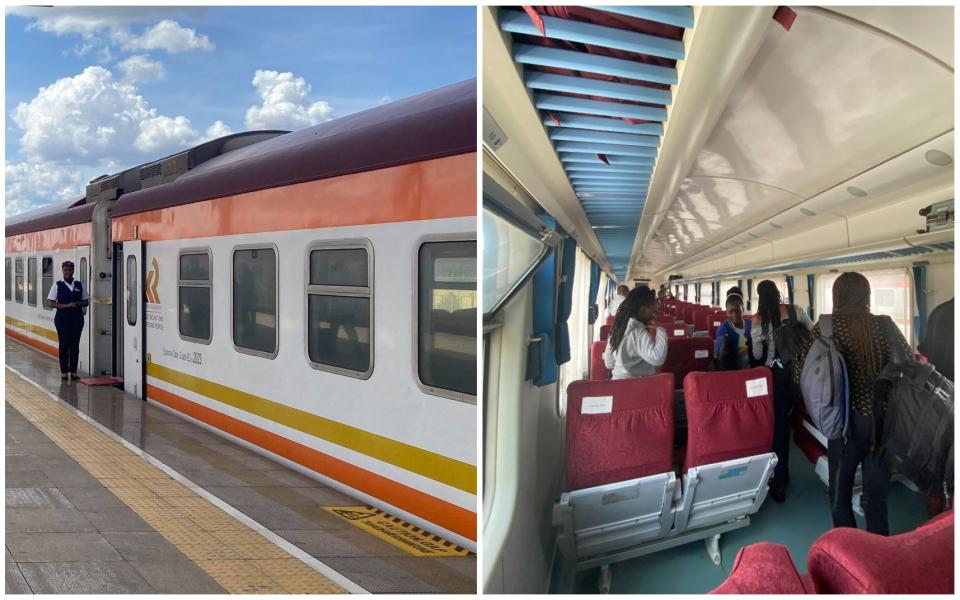

Although it is controversially financed by Chinese loans, leaving the country heavily in debt, it has proven hugely popular with locals. The Nairobi-Mombasa journey has been reduced to just four and a half hours and offers the chance to spot big game from the rails. Covering an area of 13,000 square kilometers, Tsavo, Kenya’s largest national park, is known for its elephants.
And although Tsavo receives a fraction of the Masai Mara’s visitors, the new train is turning heads.
My own trip started with two days in Nairobi National Park, a small reserve that surrounds the city. Based at The Emakoko, I went on a private game drive and within minutes I came across packs of zebras, impalas and catatonic lionesses.
“We have a lot of wildlife here,” said Rihaz Sidi, the Emakoko’s wildlife photographer in residence, as I was driven to the gate and we passed a herd of giraffes. “In Tsavo you have to drive and drive… it’s a real wild place.”
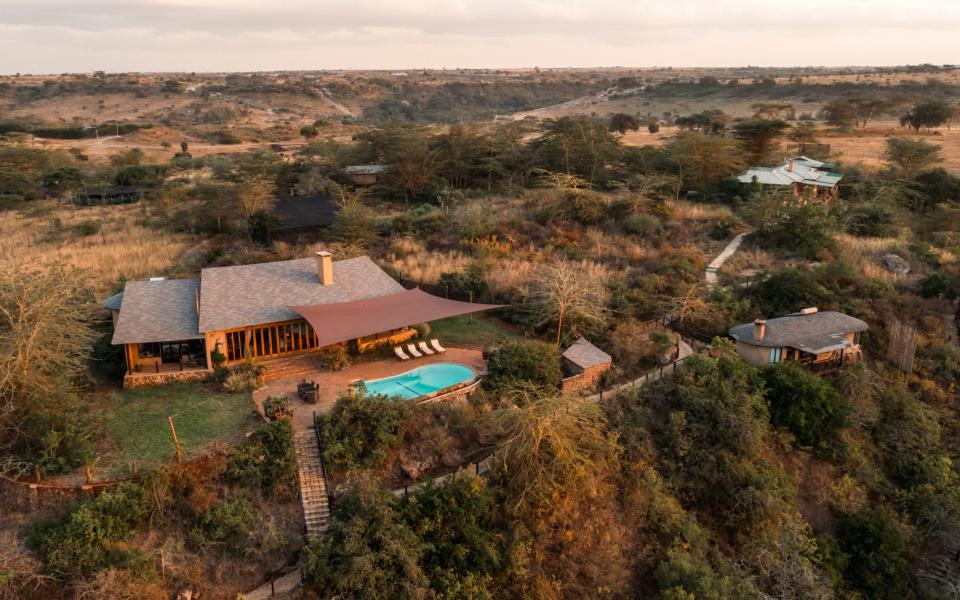

Upon arrival at the new Nairobi Terminus – a steel and glass monolith that looks like some strange 1960s vision of the future – my belongings and I were scanned, swept and sniffed (by dogs) before being ushered into the Madaraka’s first-class carriage Express by a woman dressed entirely in violet.
I was surprised at how quiet the train itself was: all I could hear was the hum of the air conditioning and the low murmur of Swahili conversations. A woman swept a mop down the aisle, followed by a cloud of chlorine vapor.
My seat was roomy and maroon, with a velvet sheen, and although I was initially alarmed to see a paper sick bag in the seat pocket, I realized my fears were unfounded when the train slid away without so much as a bump.
As we drove out of the city and through Nairobi National Park, I saw a line of ostriches parading boldly across the horizon. Then we meandered back into human territory, and I kept jumping to misidentify cows and goats as impalas and zebras.
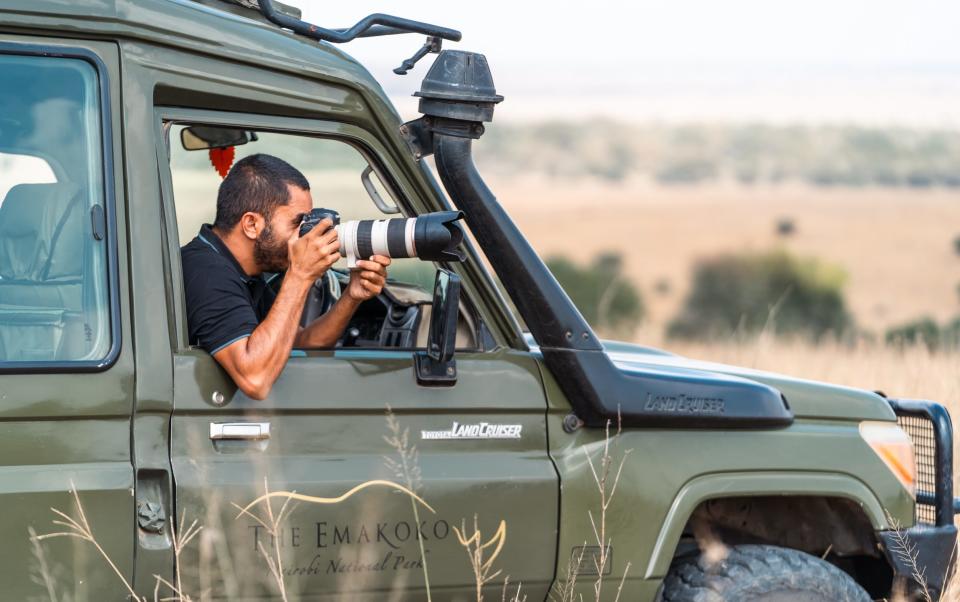

The cart announced itself with a rattling noise; taped to its side was a menu of bhajis and pakoras. In the late 19th century, the British sent approximately 32,000 Indian indentured servants to build the Lunatic Express; in 2017, their descendants were officially recognized by the Kenyan government as the country’s 44th tribe.
We entered Tsavo and farmland was replaced by a wall of bleached acacias on rust-coloured earth, but apart from the occasional zebra or giraffe it seemed Rihaz was right: the animals of Tsavo would not send a welcoming party.
As the light began to fade – along with my hope – the acacias thinned into a field dotted with faint brown shapes. I grabbed my camera and pointed it at one. “Elephants!” I exclaimed, without any response. After that first herd, the elephants kept coming, all the way to the town of Voi.
When I got off at Voi’s luminous, V-shaped station, I looked for my transfer and found two Masai, traditionally dressed in the red-striped cloth known as shuka, waiting for me: Chris Ngotiek and Fred Lenjir, guides at Kipalo Hills.
Kipalo Hills, a remote African lodge, is beautiful – all hardwood and beaten-metal lamps – but hardly opulent. “I prefer to offer guests a five-star experience rather than five-star accommodation,” founder Richard Corcoran told me as he handed me a G&T as we watched the last rays of sunshine ignite the frozen peaks of distant mountains. “You won’t find $30,000 works of art here; for $30,000 I could educate 30 children.”
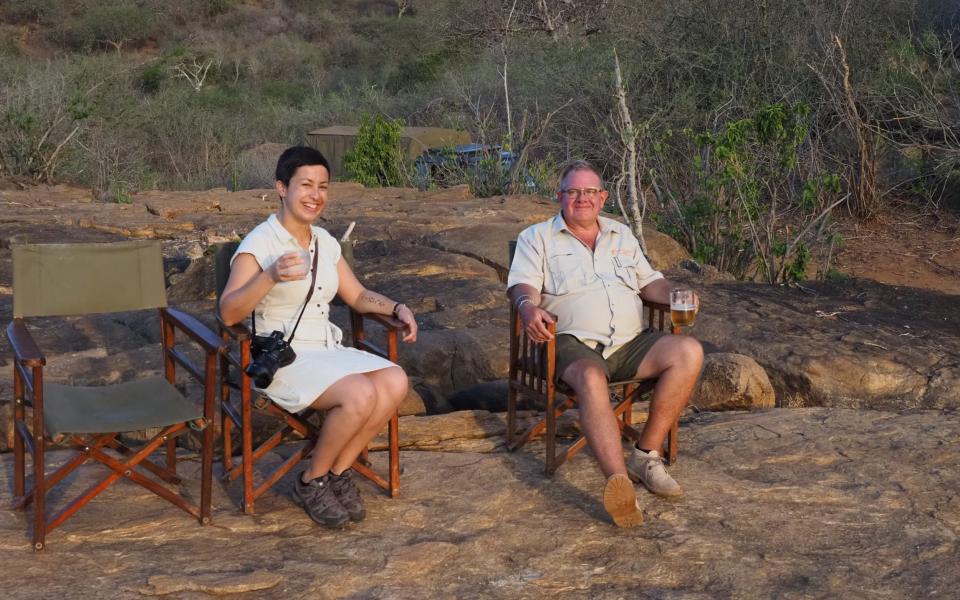

Kipalo Hills is located just outside Tsavo, in the Mbulia Conservancy and with Chris and Fred as my guides I spent the next few days exploring Tsavo by jeep. The train route divides Tsavo into two halves. “Tsavo East is about big, open spaces and big animals,” Chris told me. “Tsavo West is all about birds and beautiful landscapes.”
As if on cue, a gerenuk – a spindly antelope with a long, graceful neck – jumped across our path. “You don’t have that in the Masai Mara,” said Chris.
As we drove further into Tsavo East, the brittle bush split into a green bowl surrounded by mountains and teeming with wildlife. A herd of about 300 buffalo glittered in the mist; a male lion lay on the plain, with one eye on a herd of hartebeest
In Tsavo West we passed the infamous Tsavo Bridge – famous for the man-eating lion – rusting beneath the gleaming columns that supported the new track. True to Chris’ word, it was a twitcher’s paradise. Vultures circled over black lava ridges; yellow-necked guinea fowl scattered in our wake. My favorites, however, were the beautiful starling and the golden-breasted starling, with their prismatic plumage. Just before leaving the park, we saw a leopard hanging over a tree, and I checked off the last member of the Big Five.
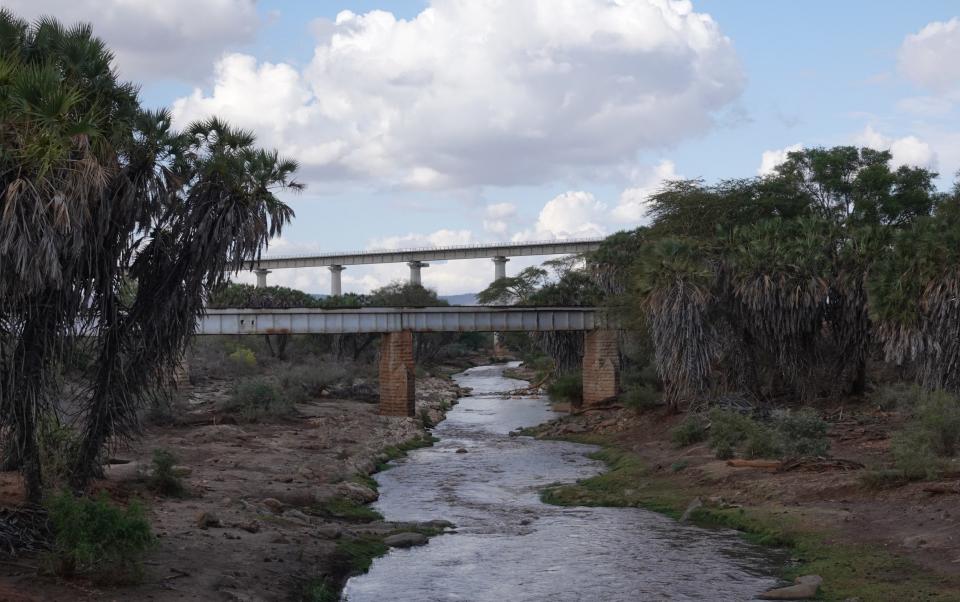

I got back on the train in Voi and headed to Mombasa to spend my last days in Kenya, sunbathing on the beach. I saw the old railway line that ran next to us, submerged in the earth and chased by baboons. This trip was noisier than the last: the velvety tones of Kenyan singer Mzima Mzima sounded from someone’s Bluetooth speaker, while a group of young boys, immersed in a game of poker, occasionally burst into laughter.
“Someone keeps cheating,” my classmate, a fourteen-year-old schoolgirl named Uti, said by way of explanation. Uti was on her way to visit her grandmother. “It’s fast and cheap,” she said of the train. “No more crashes.”
I asked her if she ever got bored watching Tsavo’s elephants roll past the window. “No,” she replied in a dreamy voice, transfixed. “They are so fun to watch.”
Of course I could have also made this trip through Kenya, which connected lodges, safaris and beaches, by car. But such a trip would isolate me from the culture I wanted to experience; and moreover: where else can you spot elephants from public transport? Take the train – you’d be crazy not to.
Essentials
Sarah Gillespie was a guest of Audley Travel (01993 838510; audleytravel.com), which is offering a new 13-day Kenya itinerary from £7,950pp, including one night at Hemingways Nairobi, two nights at The Emakoko, four nights at Kipalo Hills and three nights at Cardamom House. Including flights, transfers, train journeys and excursions